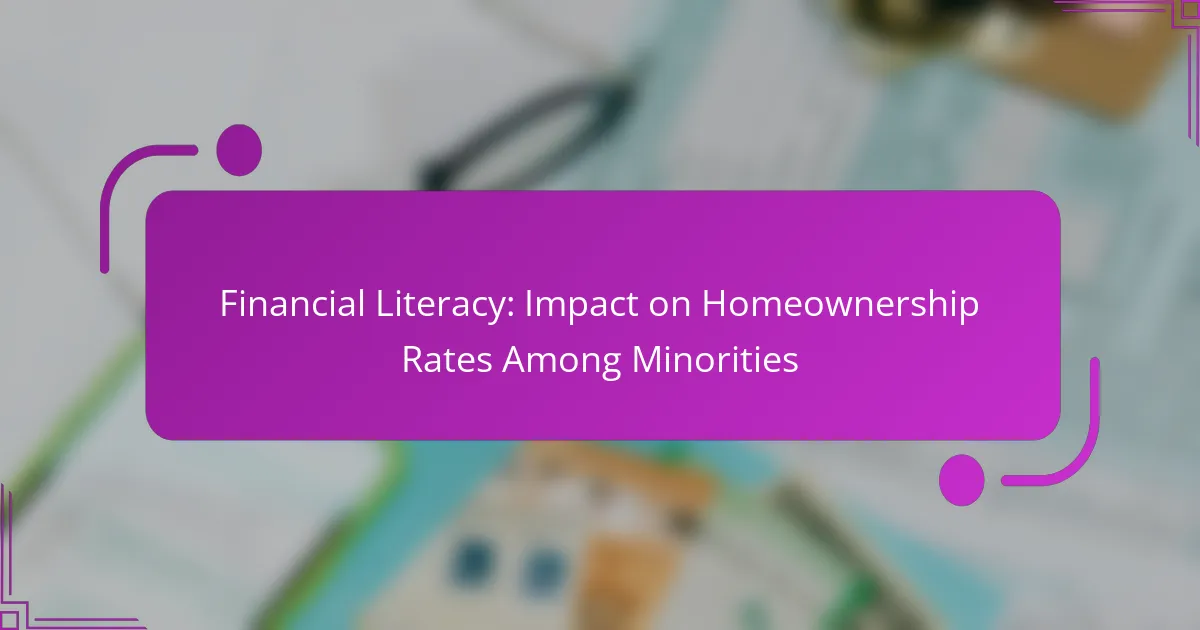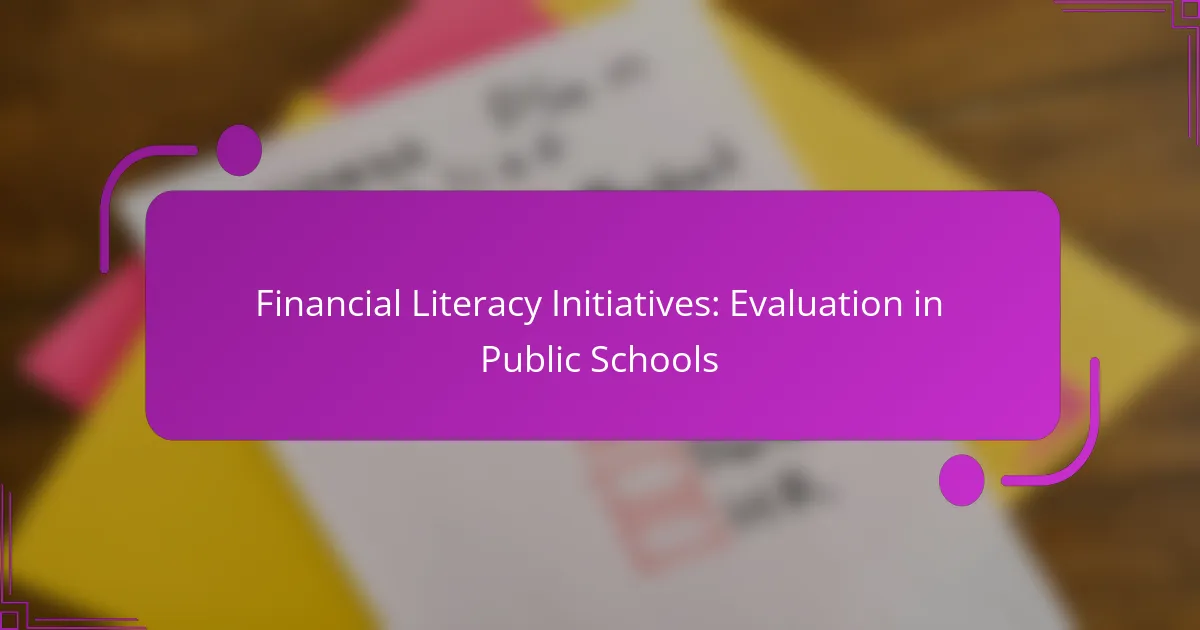Financial literacy plays a crucial role in enhancing homeownership rates among minorities by providing essential knowledge for navigating the home-buying process. By improving their understanding of financial concepts, individuals are better equipped to make informed decisions, ultimately increasing their chances of homeownership despite existing barriers such as limited access to credit and high student debt.

How does financial literacy influence homeownership rates among minorities?
Financial literacy significantly impacts homeownership rates among minorities by equipping individuals with the knowledge needed to navigate the complexities of purchasing a home. Improved understanding of financial concepts leads to better decision-making, ultimately increasing the likelihood of homeownership.
Increased understanding of mortgage options
Financial literacy enhances awareness of various mortgage products available to potential homeowners. This includes fixed-rate mortgages, adjustable-rate mortgages, and government-backed loans like FHA or VA loans, which may offer more favorable terms for minority buyers.
By understanding these options, minorities can compare interest rates, fees, and repayment terms, allowing them to choose a mortgage that aligns with their financial situation. This informed decision-making can lead to lower monthly payments and overall savings over the life of the loan.
Improved budgeting and saving skills
Financial literacy fosters better budgeting and saving habits, essential for homeownership. By learning to track income and expenses, individuals can allocate funds towards a down payment and closing costs, which typically range from 3% to 20% of the home’s purchase price.
Additionally, setting financial goals and creating a savings plan can help minorities build a sufficient emergency fund, ensuring they can manage unexpected expenses related to homeownership. Avoiding common pitfalls, such as overspending or neglecting to save, is crucial for achieving long-term housing stability.
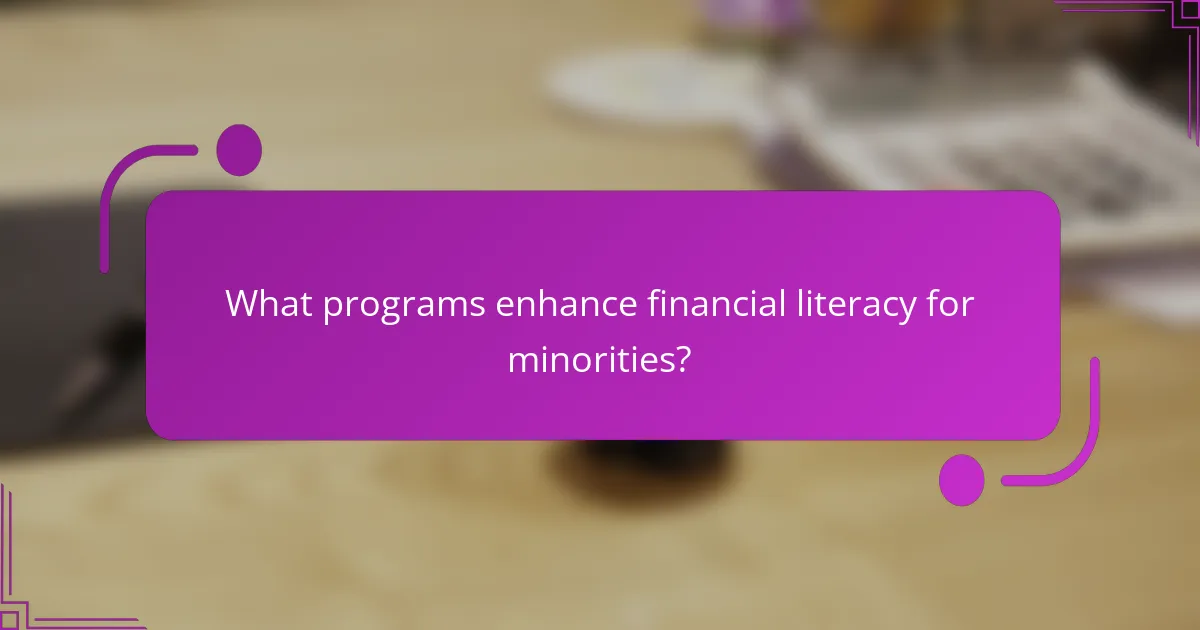
What programs enhance financial literacy for minorities?
Programs designed to enhance financial literacy for minorities focus on providing education and resources that empower individuals to make informed financial decisions. These initiatives often address specific challenges faced by minority communities, such as access to credit and understanding homeownership processes.
Neighborhood Housing Services programs
Neighborhood Housing Services (NHS) programs aim to improve financial literacy by offering workshops and one-on-one counseling tailored to the needs of minority homeowners. These programs typically cover budgeting, credit management, and the home buying process, helping participants build the skills necessary for successful homeownership.
For example, NHS often provides resources to help individuals understand mortgage options and navigate the complexities of home financing. Participants can expect to learn about down payment assistance programs and how to improve their credit scores, which are crucial for securing favorable loan terms.
National Urban League initiatives
The National Urban League offers various initiatives that focus on financial education, particularly for minorities. Their programs include financial literacy workshops and seminars that address topics such as saving for a home, understanding interest rates, and the importance of maintaining good credit.
These initiatives often partner with local banks and financial institutions to provide participants with practical tools and resources. By engaging in these programs, individuals can gain insights into effective financial planning and strategies for overcoming barriers to homeownership.

What are the barriers to homeownership for minorities?
Minorities often face several barriers to homeownership, including limited access to credit and high levels of student debt. These challenges can significantly hinder their ability to secure mortgages and purchase homes.
Lack of access to credit
A lack of access to credit is a primary barrier for many minorities seeking homeownership. Factors such as lower credit scores, limited credit history, and discriminatory lending practices can restrict their borrowing options.
To improve credit access, minorities should focus on building a strong credit profile. This can include paying bills on time, reducing debt-to-income ratios, and checking credit reports for errors. Seeking assistance from community organizations that offer financial education can also be beneficial.
High student debt levels
High student debt levels can severely impact minorities’ ability to qualify for a mortgage. With significant monthly payments, potential homeowners may struggle to meet the debt-to-income ratio requirements set by lenders.
To mitigate the effects of student debt, individuals can explore income-driven repayment plans or loan forgiveness programs. Additionally, budgeting effectively and prioritizing debt repayment can help improve financial stability, making homeownership more attainable in the long run.

How can financial education improve credit scores?
Financial education can significantly enhance credit scores by equipping individuals with the knowledge to manage their finances effectively. Understanding credit principles allows people to make informed decisions that positively impact their creditworthiness, such as maintaining low credit utilization and ensuring timely payments.
Understanding credit utilization
Credit utilization refers to the ratio of current credit card balances to total credit limits. Keeping this ratio below 30% is generally recommended to maintain a healthy credit score. For example, if your total credit limit is $10,000, aim to keep your balances under $3,000.
Monitoring your credit utilization regularly can help you avoid exceeding this threshold. Tools like budgeting apps can assist in tracking spending and ensuring that you stay within a favorable utilization range.
Strategies for timely bill payments
Timely bill payments are crucial for maintaining a good credit score, as payment history accounts for a significant portion of the score calculation. Setting up automatic payments or reminders can help ensure that bills are paid on time, reducing the risk of late fees and negative credit reporting.
Consider creating a payment schedule that aligns with your income cycle. For instance, if you receive a paycheck bi-weekly, plan to pay bills shortly after each paycheck to maintain consistent cash flow and avoid missed payments.
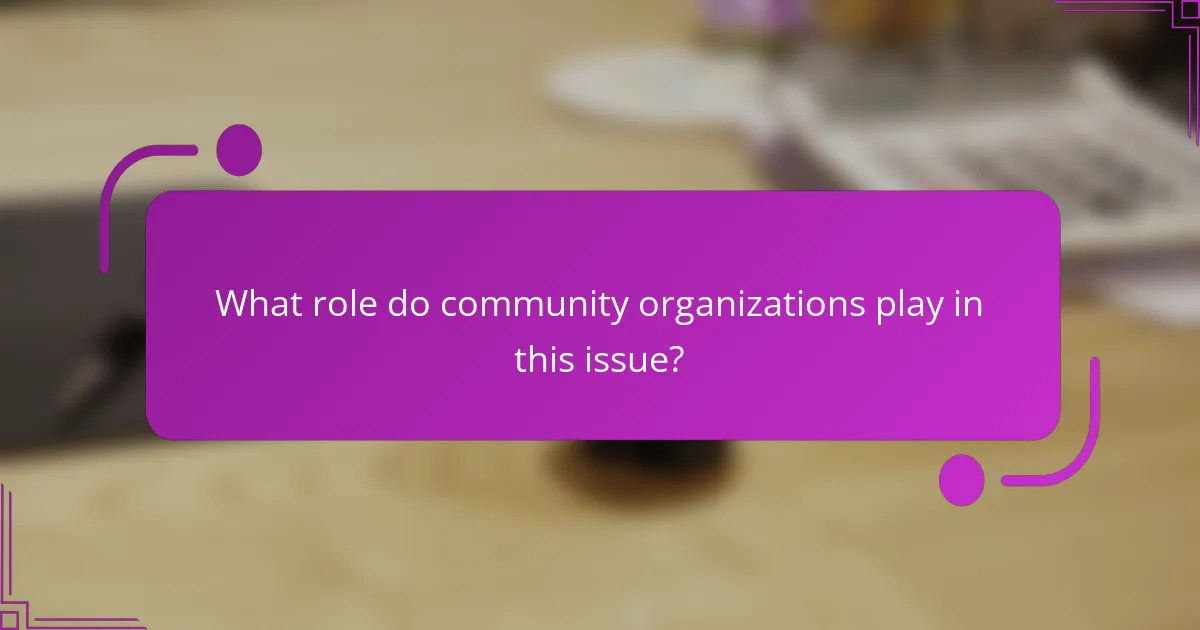
What role do community organizations play in this issue?
Community organizations play a crucial role in enhancing financial literacy among minorities, which directly impacts their homeownership rates. These organizations provide resources, education, and support to help individuals navigate the complexities of home buying and financial management.
Local workshops and seminars
Local workshops and seminars are effective tools for community organizations to educate minorities about financial literacy. These events often cover topics such as budgeting, credit scores, and mortgage options, providing attendees with practical knowledge they can apply. For instance, a workshop might include a budgeting exercise that helps participants understand their financial limits when considering homeownership.
Additionally, these workshops can feature guest speakers from the housing industry, such as real estate agents or mortgage brokers, who can offer insights and answer questions. Regularly attending these events can significantly boost participants’ confidence in making informed financial decisions.
Partnerships with financial institutions
Partnerships with financial institutions are vital for community organizations aiming to improve financial literacy. These collaborations can lead to tailored programs that address the specific needs of minority communities, such as low-interest loans or special mortgage products. For example, a local bank might work with a community organization to offer first-time homebuyer programs that include financial counseling and reduced fees.
Moreover, these partnerships can facilitate access to resources that might otherwise be unavailable to minority groups. By connecting individuals with financial advisors or credit counselors, community organizations can help them develop personalized financial plans that pave the way for successful homeownership.
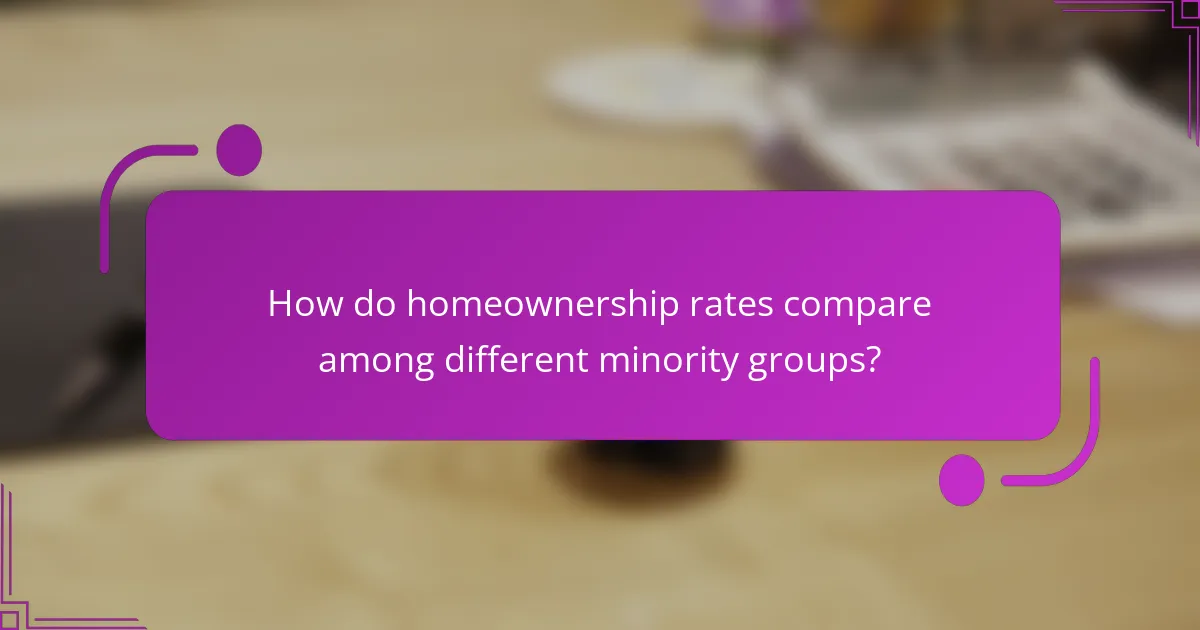
How do homeownership rates compare among different minority groups?
Homeownership rates vary significantly among different minority groups, influenced by factors such as economic conditions, access to financial education, and systemic barriers. Generally, minority groups tend to have lower homeownership rates compared to the national average, which highlights the importance of financial literacy in overcoming these disparities.
Hispanic homeownership statistics
The homeownership rate among Hispanic individuals has been gradually increasing, reaching around 48-50% in recent years. This growth can be attributed to rising incomes and increased access to mortgage products tailored for this demographic.
However, challenges remain, including lower levels of financial literacy and higher debt-to-income ratios. Many Hispanic families may benefit from targeted financial education programs that focus on budgeting, credit management, and the homebuying process.
African American homeownership trends
To improve these rates, initiatives aimed at enhancing financial literacy among African American communities are crucial. Programs that provide education on credit scores, mortgage options, and home maintenance can empower potential homeowners to make informed decisions and navigate the housing market more effectively.

What are the long-term benefits of homeownership for minorities?
Homeownership offers minorities significant long-term benefits, including financial stability, wealth creation, and community engagement. Owning a home can provide a sense of security and belonging, while also serving as a key asset that appreciates over time.
Wealth accumulation
Wealth accumulation through homeownership occurs as property values typically increase over time, allowing homeowners to build equity. For many minorities, this equity can be a crucial part of their overall financial portfolio, providing a foundation for future investments or retirement savings.
Homeownership can also serve as a hedge against inflation. As housing costs rise, the value of owned property may appreciate, often outpacing inflation rates. This dynamic can lead to significant wealth growth over decades, especially in areas with strong real estate markets.
To maximize wealth accumulation, minorities should consider purchasing homes in neighborhoods with potential for growth. Researching local market trends, understanding financing options, and maintaining the property can enhance value. Avoiding pitfalls like overextending financially or neglecting maintenance is essential for long-term success.
